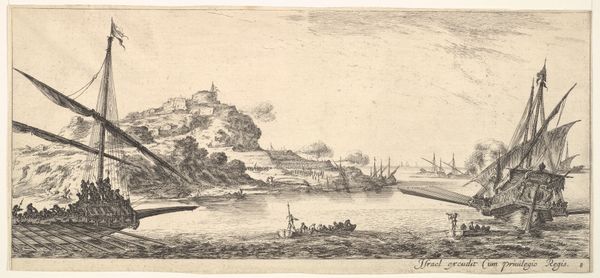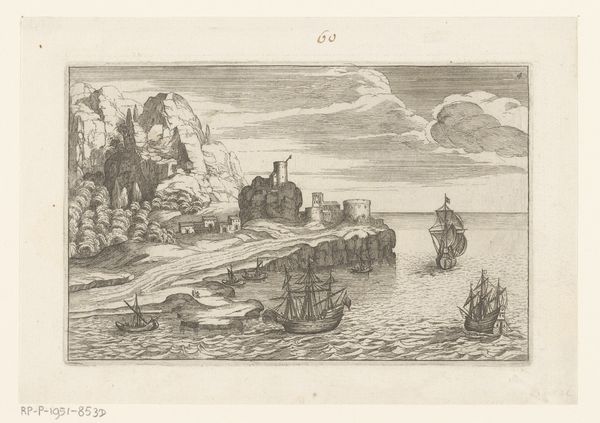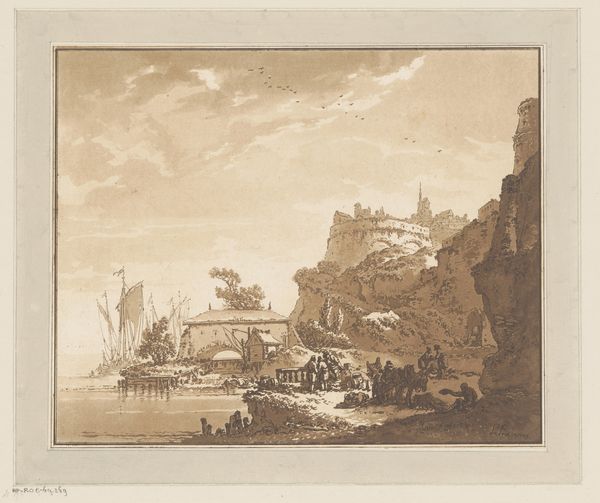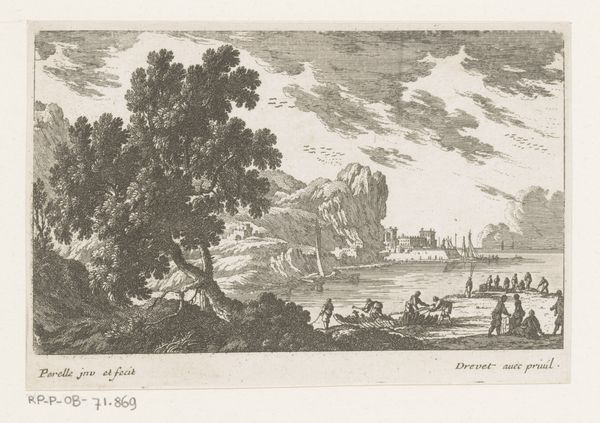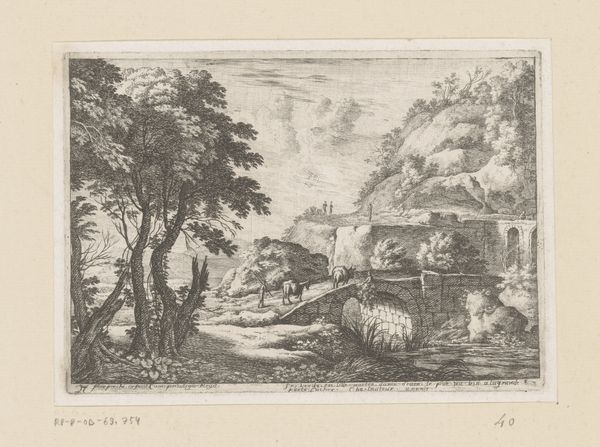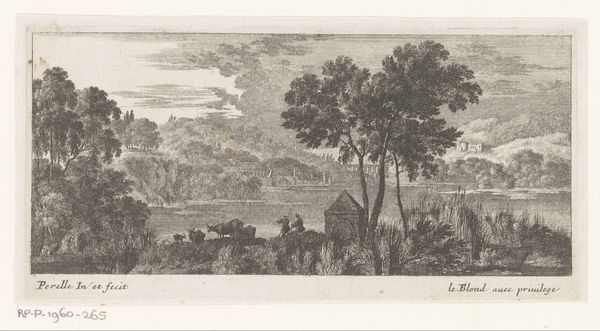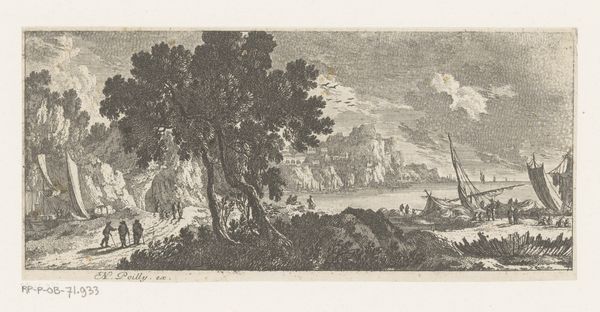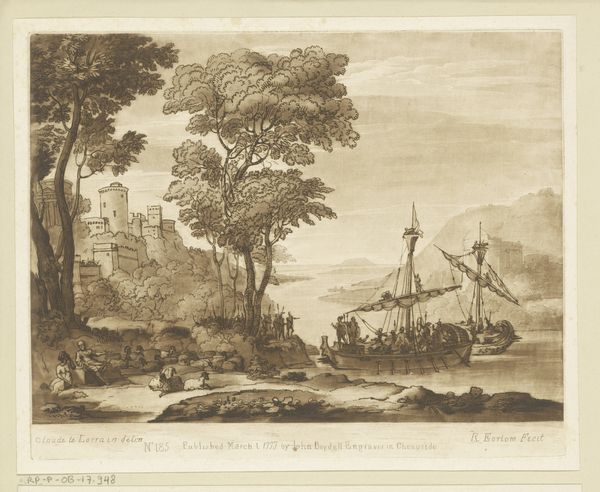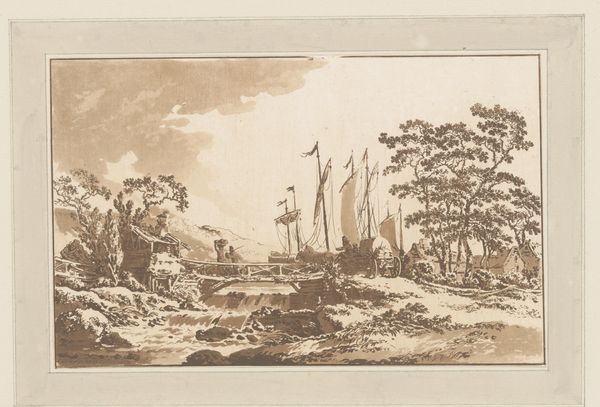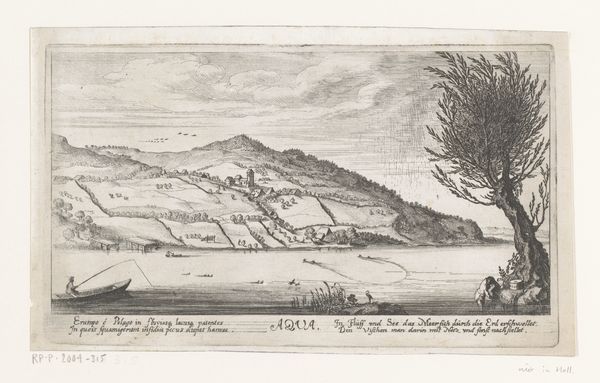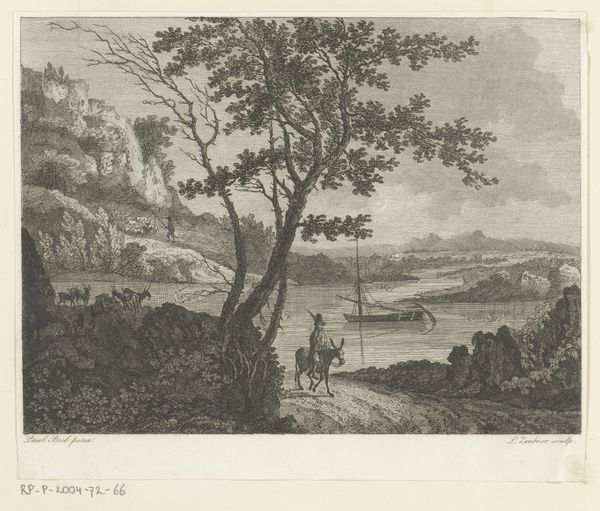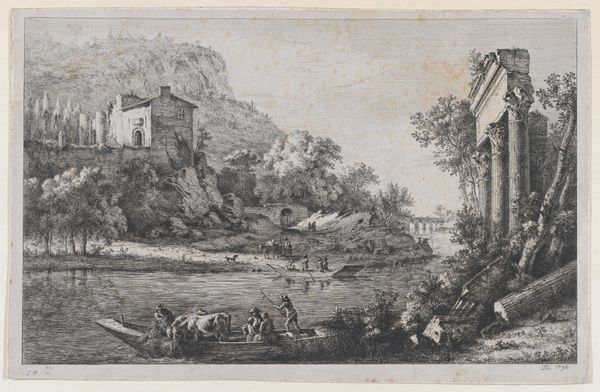
print, etching
#
baroque
# print
#
etching
#
old engraving style
#
landscape
#
etching
Dimensions: height 99 mm, width 190 mm
Copyright: Rijks Museum: Open Domain
Curator: This print, dating roughly from 1673 to 1695, is titled "Kust met schepen en toren," or "Coast with Ships and Tower," by Nicolas Perelle. The Rijksmuseum is fortunate to have it in their collection. Editor: It has a hazy, almost dreamlike quality, doesn't it? All delicate lines and a very muted tonal range. I can almost smell the briny water just looking at this etching. Curator: Absolutely. Perelle's choice of etching captures the essence of the Baroque landscape, presenting it as a stage for human activity but ultimately dwarfed by nature itself. Notice how the ships seem both purposeful and vulnerable. Ships in art often represented journeys, not just literal but spiritual. Editor: The etching technique itself—the biting of acid into the metal plate—allowed for a kind of detailed softness. It looks incredibly time-consuming! And it suggests that the landscape itself, the coastline and harbor are facilitating trade or offering some material, perhaps maritime employment. It speaks to broader, socio-economic dependencies on the sea. Curator: Precisely. The tower in the distance also holds significance. Towers frequently symbolize power, protection, and the aspiration toward higher ideals or knowledge. Its integration into the natural landscape speaks volumes. Is it protecting the bay, or dominating it? Editor: A coastline is nothing if it can't provide for the folks working and living around it, right? Thinking about the material reality of that. Someone had to build the tower with local materials and that is very much integrated to the social fabric that is represented in the work, as a kind of landscape infrastructure. I wonder about the social relations involved. Curator: An insightful observation. The subtle integration highlights a harmonious balance, perhaps a carefully constructed facade between human ambition and the unyielding forces of nature. Perelle seems to imply the ideal civilization lives in collaboration with natural boundaries. Editor: A print like this, though, isn't a one-off masterpiece but something reproducible. We must think of its utility; perhaps, circulating ideas about landscape, or even idealised representations of trading harbors... Curator: Very true. These landscapes became easily circulated and thus altered perceptions of geographical location to viewers, so images became cultural commodities in and of themselves! Editor: Well, now, I feel like I have seen much more clearly. Thanks! Curator: The pleasure was all mine!
Comments
No comments
Be the first to comment and join the conversation on the ultimate creative platform.

